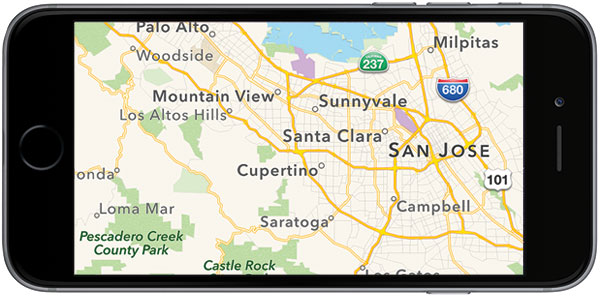Apple has purchased GPS firm Coherent Navigation, according to press reports.
The purchase is widely viewed as an effort to improve the trouble-plagued Apple Maps. Coherent Navigation offers satellite navigation hardware; software that includes precise, secure, robust positioning; and timing and communication solutions.
One area of focus for Coherent Navigation is the United States Naval Research Laboratory’s high integrity GPS program, which is led by Boeing and Iridium.
Coherent got a grant for US$80,000 from the United States Navy in 2011 to build a rapidly deployed emitter localization and detection system that can geolocate signals in the 800-2400 MHz range.
“Coherent is well known for the navigation and geolocation work that it’s done with companies like Boeing and Iridium, which has resulted in products and services that are more precise than consumer-grade solutions,” said Charles King, principal at Pund-IT.
Apple “could certainly improve its maps-related offerings with that technology,” he told the E-Commerce Times, noting that it could have other applications as well, such as enhancing Apple Pay and advertising solutions.
Coherent also might help Apple differentiate itself from Google, which has become the de facto leader in consumer mapping and related services, and that’s an issue “I expect Apple’s brain trust is working hard to address,” King said.
Sidling Off to Cupertino
It appears that senior Coherent Navigation executives have been working at Apple for some time.
Paul Lego, Coherent Navigation’s former CEO and one of its cofounders, apparently has been with Apple since January. William Bencze and Brett Ledvina, the other cofounders, hopped on board at in April, according to reports.
Patching Up Apple Maps
Apple Maps has been beset with problems since its release for iOS 6 in 2012.
Entire towns, such as Stratford-upon-Avon, and schools, were missing; others were placed in the wrong location; satellite images of various locations were obscured by clouds; a furniture museum apparently was located by Apple Maps in a river; and Airfield Park, in Dublin, Ireland, was categorized as an actual airport.
Apple Maps’ turn-by-turn directions instructed users in Alaska to drive across the airport runway to get to the Fairbanks International Airport terminal.
Apple CEO Tim Cook apologized publicly for the debacle and told iPhone users they were free to use other companies’ map apps. Apple fired Scott Forstall, the head of the iPhone software team, and Apple Maps chief Richard Williamson over the fiasco.
He urged people to download alternative maps apps, and, when Google came out with its map app for the iPhone in December, it was downloaded 10 million times within 48 hours.
Why Apple Needs More Oomph for Maps
Apple very badly needs to bolster its Maps app.
“Google “took the leadership position on GPS navigation” after buying Waze, no doubt irking Apple, which developed Maps because it didn’t want Google to have that advantage, observed Rob Enderle, principal at the Enderle Group.
Apple’s also looking to the future, when wearable devices will be the norm, and the need for higher accuracy will increase, he told the E-Commerce Times.
However, Apple Maps’ problem “is not coherence — ground resolution — it’s the accuracy of ground representation,” said Mike Jude, a research manager at Frost & Sullivan.
In other words, Apple Maps “knows where you are but may not know what’s there,” he told the E-Commerce Times.
“I’m not sure how this would solve any Apple Maps problems that might exist,” Jude continued. “GPS accuracy can currently be measured in centimeters. Iridium probably can’t improve on that accuracy, but might be able to provide a better location resolution in urban areas, where GPS has traditionally had some issues.”
























































Social Media
See all Social Media